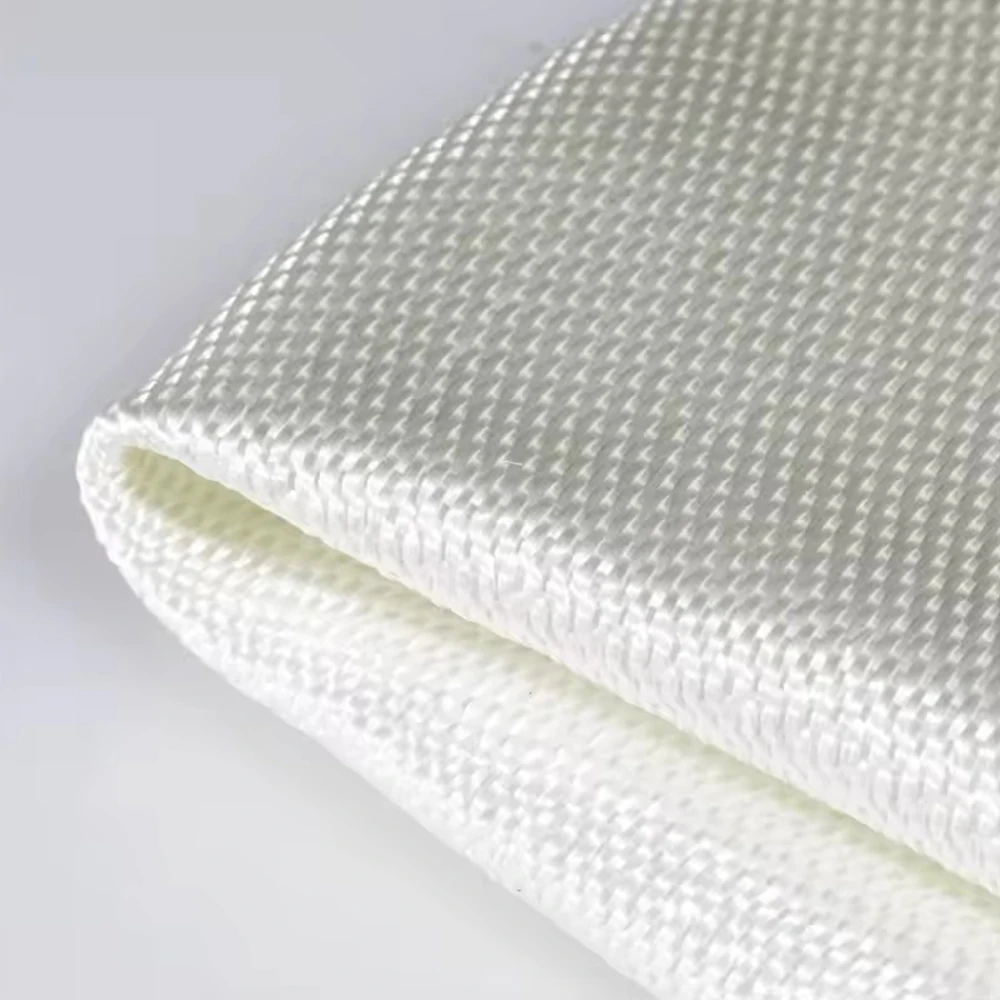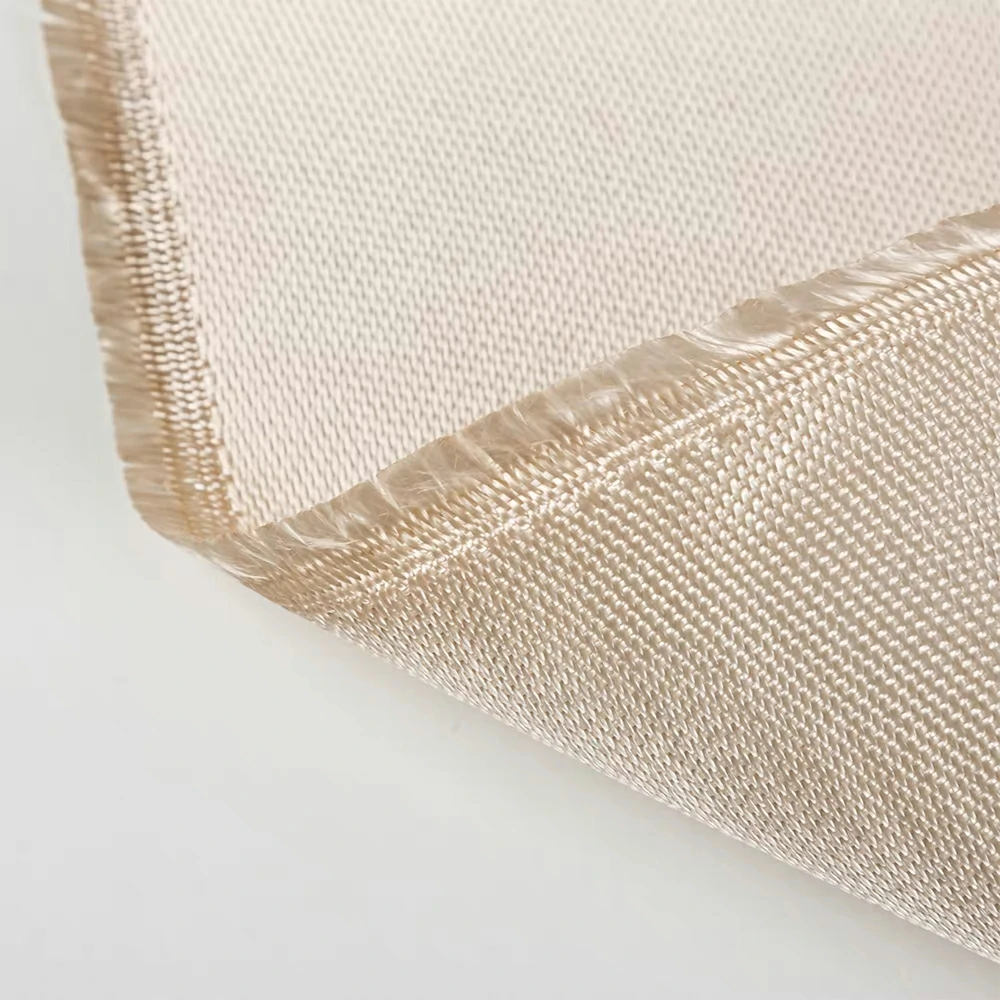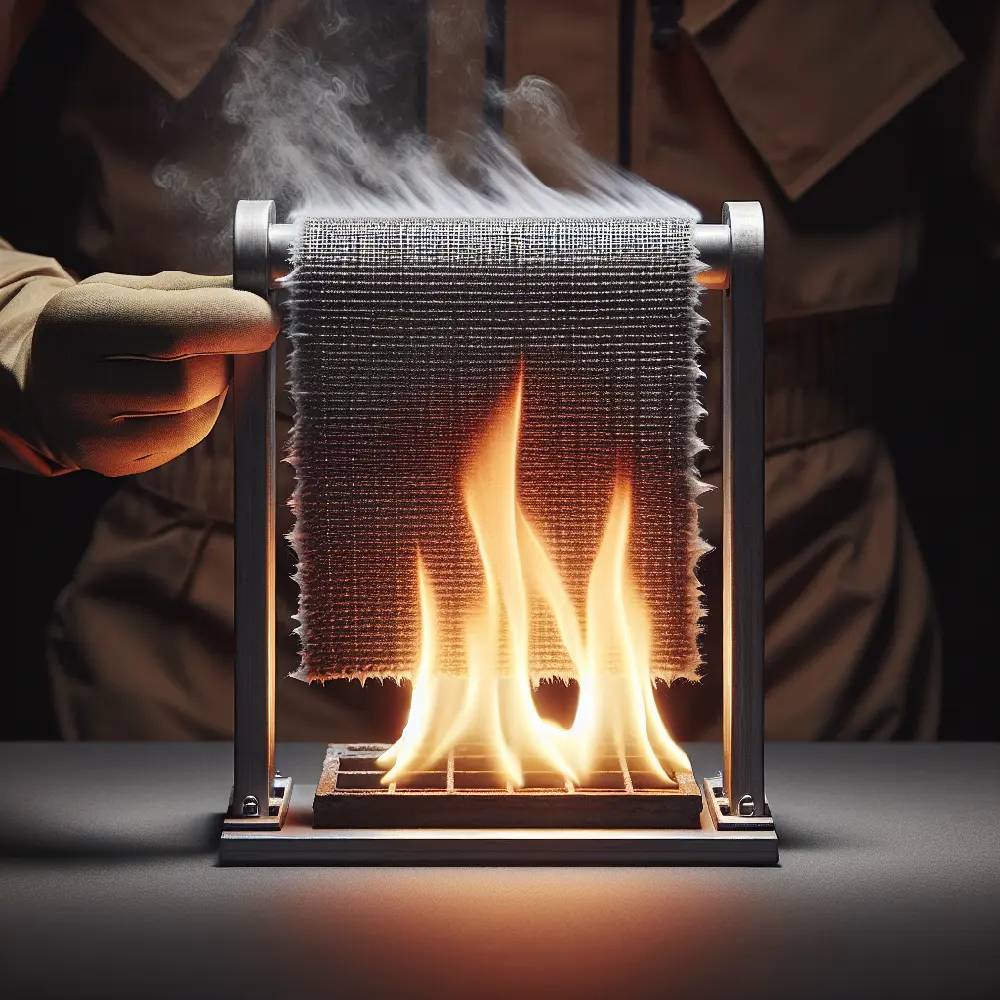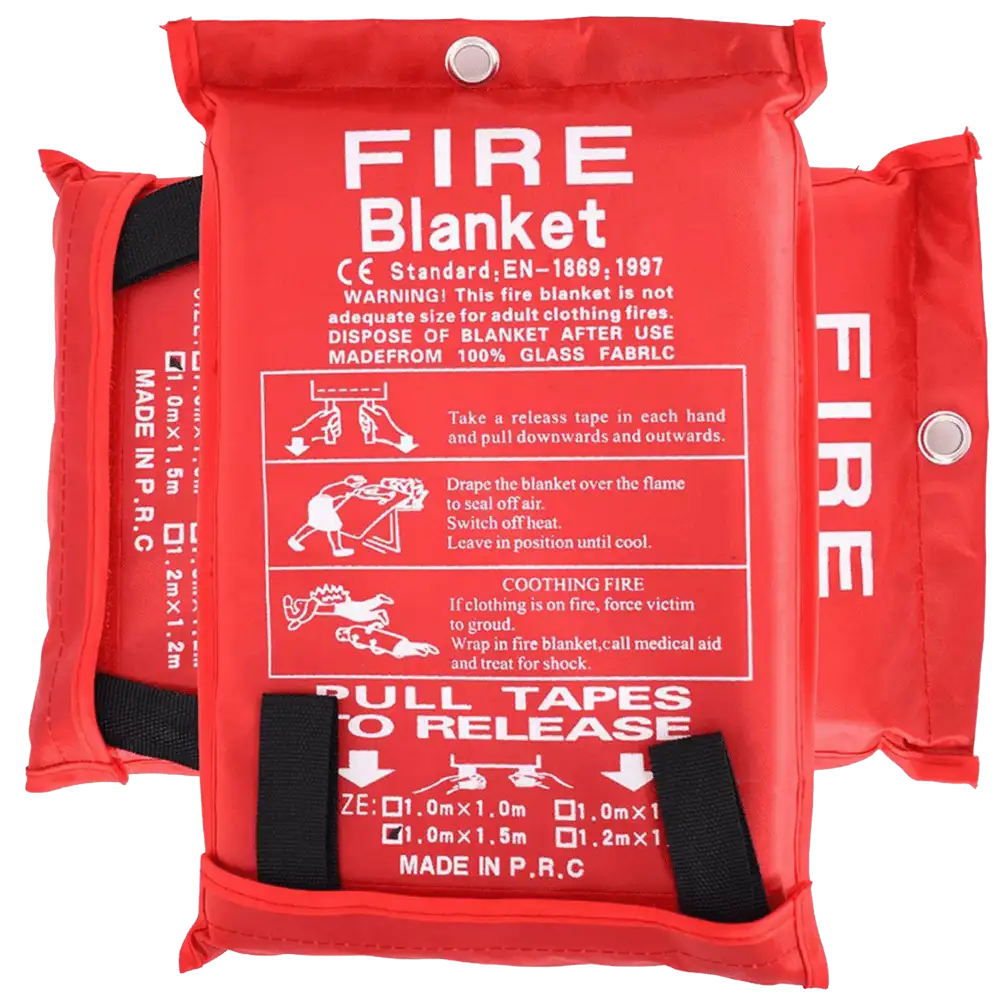In our modern, technology-driven world, the importance of heat-resistant materials cannot be overstated. They play a crucial role in a variety of industries, from aerospace and automotive manufacturing to construction and metallurgy. Among these materials, high silica fabrics stand out due to their exceptional thermal properties and versatility.

High silica fabrics, made from a type of sand known as white sand or raw materials like residual quartz, are renowned for their exceptional resistance to high temperatures. This unique characteristic is attributed to the significant amount of silica fibers present in the fabric, which can withstand extreme temperature ranges without significant thermal expansion.
Unlike regular sand or play sand, white sand contains a high percentage of silica - up to 96% in some cases. This high silica content, combined with a small amount of glass fiber, results in a fabric that is not only heat resistant but also highly abrasion-resistant. This makes it an ideal material for applications that involve heating and cooling cycles, such as in coke ovens or when dealing with glass melt.
High silica fabrics, such as silica cloth, can endure temperatures up to 1000°C (1832°F) without losing their structural integrity. This extreme temperature resistance, coupled with their low thermal expansion, makes them ideal for various applications. From silica bricks in construction to protective clothing in metal processing industries, the uses of high silica fabrics are vast and varied.
High silica textile, with their exceptional heat resistance and durability, are an invaluable resource in industries that operate under high-temperature conditions. Their unique properties make them a material of choice for many applications, ensuring safety and efficiency in challenging environments.

Silica, also known as silicon dioxide, is a naturally occurring compound found abundantly in the earth's crust. It's a key ingredient in various materials, from the glass fiber in your home's insulation to the high silica fabric used in heat-resistant applications.
Learn more: What is silica

Silica is often derived from white sand or residual quartz, raw materials known for their high silica content. This is in contrast to regular sand or play sand, which typically contains a mix of various minerals and has a lower silica content. The high silica content in white sand and residual quartz provides excellent heat resistance and low thermal expansion, making it a preferred choice for high-temperature applications.
Learn more: What's The Difference Between Silica And Regular Sand?

Now, you might ask, "Is silica the same as fiberglass?" The answer is no. While both are used in the production of heat-resistant materials, they are distinct substances with different properties. Silica, as we've discussed, is a natural compound, while fiberglass is a type of synthetic fiber made from a blend of silica, other minerals, and small amounts of glass melt.
Fiberglass, although heat resistant, does not offer the same level of temperature endurance as high silica materials. High silica fabrics, for instance, can withstand extreme temperatures up to 1000°C (1832°F), making them suitable for use in applications like silica bricks and coke ovens. Fiberglass, on the other hand, has a lower temperature resistance, typically around 540°C (1004°F).
Learn more about the difference between silica fiber and glass fiber
Silica also stands out for its abrasion resistance, a crucial property in harsh environments where materials are subject to wear and tear. This is why silica fabrics are often used in industries that require robust protective clothing or insulation materials.
While silica and fiberglass share some similarities, they are distinct materials with different properties and uses. Understanding these differences is key to selecting the right material for your specific needs, particularly when dealing with high-temperature environments.

Silica fabric, or silica cloth, is a type of high-temperature resistant textile made predominantly from high silica fibers. These fibers are derived from high silica raw materials such as white sand or residual quartz. The result is a fabric that is not only capable of withstanding high temperatures but also exhibits excellent abrasion resistance, making it a valuable asset in industries that operate in extreme temperature conditions.
So, how is silica fabric made? The process begins with the extraction of high silica content sand. This type of sand is then heated to extreme temperatures to create a glass melt. The melt is then cooled and extruded to form silica fibers. These fibers, which can withstand temperatures up to 1000°C (1832°F), are then woven into a fabric. The resulting silica cloth is not only heat resistant but also has low thermal expansion, making it ideal for applications involving heating and cooling cycles.
Now, let's talk about amorphous silica textile. "Amorphous" refers to the lack of a defined crystalline structure in the material. This property gives amorphous silica fabric some unique advantages. For one, it has a higher temperature resistance than regular silica fabric, with some types able to withstand temperatures up to 1400°C (2552°F) for short periods. It also has a lower thermal conductivity, which enhances its insulation properties.
Amorphous silica fabric is made in a similar way to regular silica fabric, but with an additional step. After the silica fibers are produced, they are treated with a leaching agent. This process removes any residual impurities and leaves behind pure, amorphous silica fibers. These fibers are then woven into a fabric that is highly heat resistant and exceptionally durable.

Yes, silica textile is indeed heat resistant. In fact, its heat resistance is one of its most notable properties. This attribute stems from the high silica content in the fibers, which are derived from raw materials such as white sand or residual quartz.
The heat-resistant properties of silica fabric can be attributed to its unique molecular structure. Silica fibers possess a low thermal expansion coefficient. This means that they don't expand significantly when exposed to high temperatures, maintaining their structural integrity even under extreme temperature conditions.
Regular silica fabric can withstand continuous temperatures up to 1000°C (1832°F). This makes it an ideal choice for applications involving heating and cooling cycles, such as in the production of silica bricks or the lining of coke ovens.
Amorphous silica fabric, a special type of silica cloth, takes this heat resistance even further. It can endure short-term exposure to temperatures as high as 1400°C (2552°F). This increased heat resistance is due to the amorphous nature of the silica fibers, which lack a defined crystalline structure and thus have a higher melting point.
In addition to its heat resistance, silica fabric also exhibits excellent abrasion resistance. This means it can withstand the wear and tear often associated with high-temperature environments, further enhancing its suitability for such applications.
The heat resistance of silica fabric, whether regular or amorphous, is a testament to the unique properties of high silica materials. They can endure extreme temperatures without significant thermal expansion, making them an invaluable resource in industries that operate under high-temperature conditions.
Learn More About:The Heat Resistance of High Silica Fabric

Silica fabric, with its remarkable heat and abrasion resistance, finds use in a broad spectrum of applications. From industrial settings to safety equipment, its properties make it a choice material where high temperature and durability are crucial.
One of the most common uses of silica fabric is in the manufacturing of heat-resistant safety gear. This includes items such as fire-resistant clothing, gloves, and blankets. With its ability to withstand temperatures up to 1000°C (1832°F) in regular silica fabric and even 1400°C (2552°F) in amorphous silica fabric, it provides a high degree of protection against extreme heat.
In the industrial realm, silica fabric is a key player in high-temperature insulation applications. It's used in the creation of thermal barriers, welding curtains, and insulation pads. Its low thermal expansion and excellent thermal insulation properties make it ideal for these roles.Learn more about What Is Silica Fabric Used For?
The construction industry also benefits from the properties of silica fabric. It's used in the production of silica bricks, which are employed in structures like coke ovens that are subjected to high temperatures. The fabric's resilience and heat resistance ensure the longevity and effectiveness of these structures.
In the aerospace and automotive sectors, silica fabric is used for heat shielding and insulation. Components that are exposed to high temperatures, such as exhaust systems and engine compartments, often incorporate silica fabric to prevent heat damage and maintain performance.
Lastly, in the energy sector, silica fabric is used in the insulation of power plants and nuclear facilities. Its heat resistance and durability contribute to the safety and efficiency of these facilities.
The uses of silica fabric are diverse and widespread, thanks to its unique properties. Whether it's in safety gear, industrial applications, construction, or energy production, its high-temperature resistance and durability make it a material of choice in many demanding environments.
Silica plays a key role in refractory materials, which are designed to withstand extremely high temperatures without losing their physical or thermal stability. The primary role of silica in these materials is to enhance their heat resistance, a property that's crucial in many industrial applications.
Silica's contribution to the heat resistance of refractory materials can be traced back to its unique molecular structure. High silica content, derived from raw materials like white sand or residual quartz, results in a low thermal expansion coefficient. This means that silica-based refractory materials don't expand significantly when heated, maintaining their structural integrity even under extreme temperatures.
Silica bricks, a common type of refractory material, exemplify this property. They can withstand continuous temperatures up to 1450°C (2642°F), making them an ideal choice for high-temperature applications like coke ovens and glass melt furnaces. This is due to the high silica content, usually above 95%, in these bricks.
Moreover, silica in refractory materials also imparts excellent thermal shock resistance. This means these materials can endure rapid heating and cooling cycles without cracking or breaking. This property is particularly useful in industries where equipment is frequently subjected to temperature fluctuations.
In addition, silica refractory materials are also abrasion-resistant, which means they can withstand the wear and tear associated with high-temperature environments. This enhances their durability and longevity, making them a cost-effective choice in the long run.
Silica's role in refractory materials is pivotal. Its unique properties, such as low thermal expansion, high heat resistance, and abrasion resistance, make it an invaluable component in the creation of materials that can withstand the most demanding conditions.
Silica fabric, derived from high silica content raw materials like white sand and residual quartz, has carved out a significant role in various industries due to its exceptional heat and abrasion resistance. Its ability to withstand extreme temperatures, up to 1000°C (1832°F) in regular fabric and 1400°C (2552°F) in amorphous fabric, makes it indispensable in safety gear, industrial insulation, construction, and energy sectors.
Similarly, silica's role in refractory materials is vital. Its low thermal expansion and high temperature resistance, coupled with its durability, make it ideal for creating heat-resistant materials like silica bricks. These bricks, with their high silica content, can endure continuous temperatures up to 1450°C (2642°F), making them perfect for high-temperature applications such as coke ovens and glass melt furnaces.
Looking ahead, the future of silica fabric in heat-resistant applications seems promising. As industries continue to push the boundaries of technology and operate in more extreme conditions, the demand for materials that can withstand high temperatures and abrasive environments is likely to grow.
Furthermore, advancements in material science could lead to the development of silica fabrics with even higher temperature resistance and improved physical properties. This could expand the range of applications for silica fabric, ensuring its relevance and importance in the future.
Whether it's in the form of fabric for heat-resistant safety gear or as a component in refractory materials, silica's unique properties make it a crucial element in many high-temperature applications. Its future looks bright as we continue to explore and push the limits of technological innovation.
 Understanding Fiberglass: Fire Safety and Heat Resistance
Understanding Fiberglass: Fire Safety and Heat Resistance
 Top 5 Heat-Resistant Wonders: How High Silica Fiberglass Fabric Excels in Extreme Temperatures!
Top 5 Heat-Resistant Wonders: How High Silica Fiberglass Fabric Excels in Extreme Temperatures!
 Is Kevlar Fireproof? Unveiling the Truth Behind Kevlar's Flame Resistance
Is Kevlar Fireproof? Unveiling the Truth Behind Kevlar's Flame Resistance
 Do Fire Blankets Work? Understanding Their Functionality and Benefits
Do Fire Blankets Work? Understanding Their Functionality and Benefits